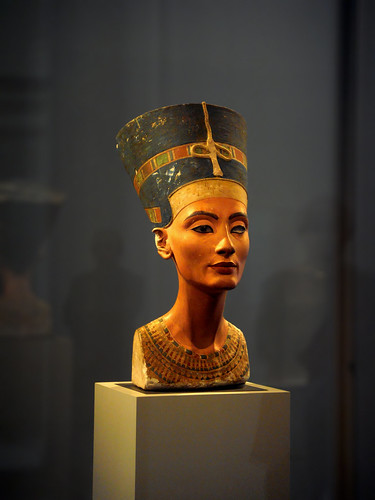In his August 7th, 2009, interview with Heritage Key, Zahi Hawass revealed that the Supreme Council of Antiquities was gathering evidence regarding the illegal appropriation of the bust of Nefertiti by the Altes Museum in Berlin. I will reveal [the evidence] in October when I write the letter to the Berlin Museum for the return of the piece, because it left Egypt illegally, Dr. Hawass stated.
In a new article published in Al-Ahram Weekly (Queen of Egypts heart), Dr. Hawass reveals that his wish is for the bust to be placed in the Museum of National Heritage at Giza in time for its official opening. He may be in for a fight, but thats nothing new for Dr. Hawass, who has returned more than 6,000 artifacts to Egypt in the last seven years.
Discovered, Dislocated, and Defamed
The bust was discovered in 1913 by a German team working under Ludwig Borchardt while excavating the studio of Thutmose, Akhenatens royal Master of Works. At the time Egypt was under French control, and excavation regulations stated only that unique discoveries would become part of the Egyptian national collection and that half of what remained was to go to the excavator. According to the regulations, Borchardt had to publish the results of his excavations within two years, which he didto the exclusion of the Bust of Nefertiti.
The rest of the world would have to wait a decade to view the elegant sculpture of the queen. In 1923 Nefertiti went on display in Germany, and she has been hounded by controversy ever since. The initial complaints were fairly obvious: the bust was clearly a unique artifact, and its conspicuous absence from Borchardts summary of discoveries smacked of subterfuge.
Then, beginning shortly after the 1952 Revolution and culminating with Swiss art historian Henri Stierlin in 2009, questions arose concerning the authenticity of the bust. In interviews following the release of his book, The Bust of Nefertitian Egyptology Fraud, Stierlin claimed It seems increasingly improbable that the bust is an original. However, the authenticity of the bust is perhaps the only thing upon which Dr. Hawass and the Altes Museum agree.
Questions of the queens honor aside, the primary controversy revolves around issues of acquisition and ownership. Germany continues to claim Borchardt brought the artifact to Berlin without deceit, and that the bust of Nefertiti has become a part of German cultural identity, even going so far as to refer to her as the Berlin Bust.
Defender of the Queen
For his part, Zahi Hawass remains unrelenting and continues to gather evidence. One hint of this evidence may have come in February, 2009, when the BBC News reported that Borchardt claimed in his own diary that the bust was indescribable, a word hardly appropriate for a non-unique artifact unworthy of mention in his final report (German guile won Queen Nefertiti). The BBC further revealed that Borchardt misrepresented the bust in such descriptions as he did provide, stating that it was made of gypsum rather than limestone, and produced a photograph that was unflattering by design.
Hopefully we will learn more when Dr. Hawass publicly discloses the content of his letter to the Berlin Museum in October. Dietrich Wildung, curator of the Altes Museum, seems to be preparing his own counter argument, claiming that the bust is now too fragile to move. We could never be certain that she would arrive in good health.
Herr Wildung! How ungallant!
Image by okkofi. All rights reserved.

